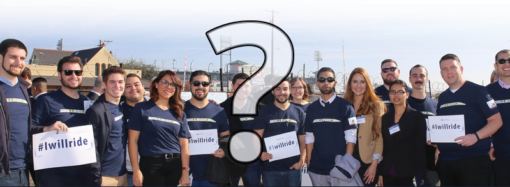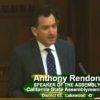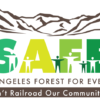Everyone should know the High-Speed Rail board meeting is being held in San Jose on Tuesday September 17th at 1 pm. at the Santa Clara County Building located at 70 W. Hedding Street. There are several interesting topics on the agenda including preferred alternative routing suggestions by staff for San Francisco to San Jose and San Jose to Merced segments. It’s rare that they hold it in the Bay area, try to attend and let the board hear from you.
This article is about a rather interesting interview on KALW public radio on September 9th with High-speed Rail Chairman Lenny Mendonca and Ethan Elkind. Elkind, the host of City Visions attempted to ask some meaty questions but Mendonca artfully dodged some tough questions much like former board Chairmen have. To hear the complete one hour podcast press. listen. The arrow is at the top.
They discussed subjects such as why the Central Valley development is so important, job and business growth in the central valley, sprawl, phasing for the high-speed project, private and federal contribution in the system and possible loss of dollars from federal grants. There are just a few issues highlighted below.
Ethan Elkind read part of Governor Newsom’s speech in the Spring. While Newsom said, he was supportive of the Brown’s high-speed rail vision he announced, “Let’s be real, the current project as planned would cost too much and respectively take too long. There has been too little oversight and not enough transparency. Right now, there simply isn’t a path to get from Sacramento to San Diego let alone from San Francisco to Los Angeles.” A few days later, frankly after objections were raised, Newsom modified his message, making it sound as if someday they would get Los Angeles to San Francisco segment done.
Note: After threats of a take back of federal grant funds, the state filed a lawsuit. Mendonca insists they have a great relationship with the Federal Railroad Administration (FRA) and will prevail in court. See the 16 page is the letter the FRA sent concerning non-compliance.
Mendonca saw no conflict in what Newsom stated. They were going to execute a building block program starting in the Central Valley and then connecting with other trains such as Ace and Caltrain. He also mentioned transparency and proudly pointed out the fact they now have change orders listed on their website.
Commentary:
If there was had been an opponent on that podcast, they surely would have offered a different view of the website changes completed under new management. This board is anything but transparent. The High-Speed Rail board stripped the website of many documents. The public now has to ask for missing documents by public records request. Former business plans prior to 2016 are gone. Transcripts of the board meetings are no longer provided.
Example to demonstrate the raid of documents, Activist Cindy Bloom from Southern California found an enormous void. She asked for and received, after a month of waiting, 12 unlabeled CD’s full of information no longer available on the website. They say the reason for the website changes is the Americans with Disabilities Act but that was passed quite a while ago, why now?
Later in the interview, one of the most interesting exchanges was about the current segment, effectively the 119 miles under construction and beyond, Merced to Bakersfield. To hear the exact words and the full interview on this section, press. listen. Section (37.52mm-41 mm) Here is part of the Q & A, but not verbatim.
Elkind: I want to ask about the current segment under construction, so its Merced to Bakersfield. There are plans to extend the ACE line or Amtrak line out to Merced.” Do you envision that there might be at least sort of a temporary rail connection, what HSR is going to be providing with this first segment that could potentially take you all the way into the Bay Area? Not on a high-speed train at least at first but with the connection that are underway right now?
Mendonca says “yes, sure absolutely. The important element about high-speed rail, it’s a backbone and eventually will be broadly connected across the state but along the way it needs to have from a passenger standpoint relatively seamless transition between different modes of rail so you can get on in San Francisco and show up in Bakersfield with connecting maybe with Caltrain, ACE or San Juaquin’s.”
He continues, “from your stand point you are getting on the train in one place have one ticket and get off in another place. That’s an important part of how this is going to all have to connect. With the state’s rail plans the broader view about how this is going to work has a very interesting view and map and vision. So, I think that’s an important way of how this will connect. It doesn’t have to wait until the full deployment of high-speed rail to have real passenger benefit. “
Elkind asks more about this. “In the short term before we can get high-speed train up and running, is it possible that the segment under construction now, is going to be a separate ROW for a diesel fueled Amtrak trains that might connect to Merced and to the Bay Area? What is, maybe not short term but medium outlook for the construction now if we can’t get to a full high-speed rail system?”
Mendonca: “No, we are going to get to a full high-speed rail system, it’s just sequencing. What we’re going to do in the meantime, is making the best use of what’s available to help minimize the time people are sitting in cars and trains and also to minimize the environmental output that comes from those modes of transportation. That’s why electrifying Caltrain is an important part of that step. We are not yet prepared to talk about the sequencing of how that will all happen. Rest assured, the intent is to have an interconnected system that is as much as possible enabling people get from one place in the state to another with as little complexity as possible.”
Elkind continued to press for more particulars. Would the system be making money if it did provide a new ROW for Amtrak trains in the Valley if that’s the short-term role of this construction? Mendonca asks would what make money? Elkind attempts to clarify. Would converting this segment under construction now, just allowing Amtrak trains to run in the traditional diesel…
Mendonca: He stops Elkind, no it will be high-speed rail when it’s done.
Elkind: So, it will never be a diesel fueled train Amtrak line as an interim until full high-speed rail comes? It will be…
Mendonca: “No, the bonding requirements and the grant requirements require high-speed rail on those rails and they are built for that.”
Commentary about the article:
First of all, the only segment that is being built today is 119 miles, not to Bakersfield or to Merced. The rest is an extension if the Authority has the money
During this interview Mendonca uses several terms with lots of wiggle room leaving one to wonder the meaning of such words as “sequencing” “done”, “intent” as well the unspoken word, “someday.” However, he flatly denied a diesel fueled train for Amtrak as an interim service.
However, the Authority’s executive staff offered a different answer about exactly what can be delivered by 2022, the federal deadline. Joe Hedges, Chief Operating Officer says all we can expect by 2022 is “plain rail infrastructure” not high-speed rail. He predicts that a high-speed rail line could be expected by 2030. Look around the 3 min 53 sec mark. The total clip is six minutes.
Many have said the Authority is tremendously behind in construction in order to make a 2022 deadline including the Peer Review Group and the State Auditor. If the Authority can’t complete the high-speed rail infrastructure, what the rail authority must build is a track that Amtrak can use. This is the back-up plan called the independent utility clause in the federal contract. This is not in compliance with Prop 1A. The Authority must have the money to complete the smallest building block allowed in Prop 1A which is the corridor or usable segment thereof and it must be high-speed rail suitable and ready and operate without requiring subsidy.
Mendonca also spoke about and interim service connecting the travel modes such as Caltrain, Ace, San Joaquim’s with one ticket. But a one seat ride with no transfers permitted is in legislation and the subject of great conflict years ago from those who wanted the high-speed train to stop in San Jose with a transfer to Caltrain to complete the ride to San Francisco. Apparently, the rationalization was if they had to transfer to other lines that a passenger loses interest because of the inconvenience and time it takes.
Time and money concerning high-speed rail have been studied in depth by authors William Grindley and Bill Warren. Three recent years of research (2016-2018) from William Grindley and Bill Warren (Authors of 44 papers about HSR) showed that HSR was only Total Travel Time competitive against Auto or Air travel on less than one in five (17%) of its planned routes. HSR cannot compete – either on the basis of door-to-door times or travel costs – with Autos on short distances (<125miles) or Air travel (+400miles).
Grindley says, “Our July 2019 paper, submitted like others to the High-Speed Rail Authority, concluded that Auto travel was always faster than using the Altamont Corridor Express (ACE) alone between Merced and San Jose, or combining HSR between Bakersfield or Fresno with the Altamont ACE train at Merced. [Found at: https://www.sites.google.com/site/hsrcaliffr/home/2-1-major-reports—2018-plan/6-2019—if-you-connect-to-ace-they-still-will-not-come ]
Finally regarding profitability Grindley offers, “We found HSR can’t compete in markets where three-fourths of California’s 39Million people live, so travelers between its three major metro areas are served faster (and often cheaper) by Air (LA Metro-SF Bay Area and SF Bay Area-San Diego) or Autos (LA Metro- San Diego). Since HSR’s revenues can’t cover its operating costs between destinations where 75% of Californians live, Californians will be stuck with paying an illegal subsidy – Forever! [This work by William Grindley and William Warren is found at: https://sites.google.com/site/hsrcaliffr/home/2-1-major-reports—2018-plan/09-2018-if-you-build-it- they-will-not-come—the-sequel].”
Another interesting discussion in the interview concerned if the California Legislature possibly wanting to pull away some high-speed rail bond funds. Elkind says there were some rumblings and reporting in the LA Times earlier this summer that the Legislators, who might otherwise be supportive-liberal progressive members, might be trying to claw these high-speed rail funds for local projects if it doesn’t look like the whole system can be built out. Do you think there is a risk that they may try to repurpose some of these funds he asked Mendonca?
Mendonca admits some of the Southern and Northern California representatives that are feeling a sensitivity from their constituents to fund infrastructure projects where they are.
He believes they need to build out the high-speed rail path that they are on, deliver what said they said they were going to do, make sure it’s out there and demonstrated plus they need more investment in infrastructure in Southern California and the Bay Area. He believes more infrastructure should be built in the state but not at the expense of the Central Valley segments which have federal grant and bonding requirements. Mendonca says he believes “it’s not about people saying we are not happy with what we are doing, we want to take your money, it’s more a statement of we need money elsewhere too.”
But in reality, some members of the current high-speed rail board appear ready for a fund raid. Board member Camacho from Southern California has requested a side by side comparison of each segment to see which segment could use the money more effectively. He requested it measure ridership, congestion relief, completion date, environmental benefits, economic benefits, private investment, availability of matching local funds, etc. Board Member Ernest Camacho introduced this idea back in May. Here is a 13-minute segment with Camacho’s comments at the front end with reaction from other board members toward the end.
But this study has been delayed. First a preliminary look was due in July. Then September since it moved from the hands of the staff to a consulting company and it appears there are no sign of it on the September agenda. Has it been deep sixed and why?
Let’s see the San Jose Board meeting offers any clues when that study might appear.
All in all, the interview provided a glimpse into what the new Chairman is thinking and KALW certainly asked some probing questions but if allowed, it would have been a bit more challenging had a knowledgeable opponent when present to offer an alternate prospective.




